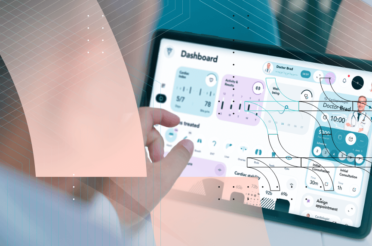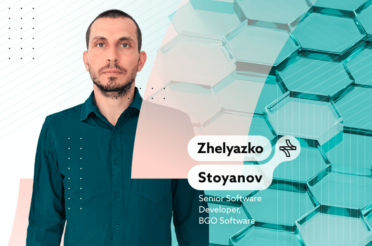The boundaries between IT and different industries are quickly blurring. It’s not surprising then that market researchers observe the same tendencies between the IT sector, software development and the healthcare industry. The power of software developments extends far beyond computers used by scientists, researchers and other practitioners for the completion of simple routine tasks, like registering patients, for instance. On the contrary. Technologies nowadays find increased application in much more complex research and life-science processes – from monitoring studies to the complete digitalization of healthcare. In the last couple of years, though, the focus shifts to clinical trial management systems (CTMSs) and their integration into large CROs, hospitals and other research institutions. The reasons for this? Well, there are plenty of them but among the most important ones is the one related to patient recruitment and retention.
In general, effective patient-recruitment and retention are considered key factors in delivering successful clinical trials. Unfortunately, this is not only expensive but also very challenging to achieve. According to a recent statistical analysis, around 37% of studies are scored unsuccessful because they don’t meet their pre-set enrollment timelines and fail to retain the target number of human subjects. Which, in return, results in major clinical trial delays. What’s even more striking is the fact that half of the research sites fail to enroll more than one study volunteer.
AND THAT’S A HUGE DRAWBACK, TAKING INTO ACCOUNT THAT MORE THAN 25% OF THE OVERALL TRIAL BUDGET IS SPENT ON PATIENT RECRUITMENT
Most of the times, patient recruitment goals center around the idea to simply speed up the whole process, neglecting the fact that in order to engage more patients, there is a need for maximized awareness and access to sufficient information provided to potential trial participants be that through social media or other new-age instruments. After all, the healthcare industry is marching towards a digital evolution that will introduce plenty of tech-driven tools for optimization.
Consequently, patient enrollment and retention strategies should go beyond strictly ‘tunneled’ methods for data collection. To achieve optimal outcomes, the process should focus on the specific patients’ needs, their real-world and digital behavior, online communication and interaction, what insights they require, what knowledge they have or need to gain, and what study-related data could be actually accessed by them.
THE ONE AND ONLY WAY TO FIGHT LOW RETENTION RATES IS TO RELY ON DATA, TECHNOLOGIES AND CLINICAL TRIAL SYSTEMS

On-time targeting and engagement of patients is highlighted as the main objective for the successful conduct and completion of a study in the first place. Nevertheless, what quite often stays ignored is the next step – retention. On the one hand, investigator sites are struggling with the timely enrollment of appropriate human subjects. On the other hand, they face yet another challenge – that of preserving enough number of volunteers for the phase to follow. And here’s when technology and advanced software solutions step in.
In the age of IT and innovative tech, an increased number of biopharmaceutical and research companies are beginning to not only understand the potential of clinical trial systems, but to test their features and capabilities. After all, no manual effort can save as much time and energy as technologies can.
REAL-TIME ACCESS TO CENTRALIZED PATIENT-SPECIFIC DATA
Sufficient data is what drives clinical trials forward. Quite often, unfortunately, sponsors and researchers find it difficult to predict and manage recruitment rates, allocate appropriate subjects who meet predefined criteria and track their progress due to the lack of enough statistics and findings or because of unstructured data. With the use of healthcare technologies, like CTMSs, experts benefit from 50% easier access to centralized data, reducing the number of delayed trials.
It’s not surprising that centralization is one of the most beneficial features of a CTMS then. When all the necessary information is collected from various sources and multiple locations and is compiled in one directory, practitioners can easily and time-effectively estimate likely patient recruitment rates for a given trial. Most clinical trial management systems now are distributed with integrated features for electronic health records (EHR). Such records turn out extremely helpful for CROs, inspectors and other specialists involved in the trials when they strive to engage more participants and retain them. The reason for this the centralized data which offers insights into:
- Demographics
- Patients’ medical history
- Previous treatments, interventions and medication consumption
- Laboratory test results and treatment progress
- Level of patient adherence
- Billing information and more
REDUCE POOR PATIENT RECRUITMENT AND SHARE CRITICAL PATIENT-CENTRIC INFORMATION TO RELEVANT SITES AND LOCATIONS

A major barrier to conducting a smooth and timely patient recruitment is that of finding patients who match predefined criteria and standards. However, thanks to the utilization of a CTMS, sponsors can work with a database of previously researched contacts and selected names of volunteers who match the eligibility criteria. What’s even more, the ability to prepare CTMS feeds with other peers and pharmaceutical or biopharmaceutical companies is yet another advantage.
Using such patient-centric data, sponsors can easily suggest and plan similar trials where these people can be located to later on. Once being organized and compiled together, key information can be shared to different care providers and distributed across different systems if necessary, thus saving time and money for similar processes which are usually carried out from the ground up.
Moreover, CTMSs and data-driven features allow practitioners to look back at numbers and statistics to track and monitor recruitment strategies. They can see how many patients were reached, what they responded to and how, what media channels turned out most valuable. CTMSs, like our Clinicubes CTMS, further let sponsors and researchers perform analysis of underperforming and overperforming activities. They can see how many people originally enrolled after launched campaigns, how many continued to the next Phase of a trial and how many of them completed the trial. Based on such operational data at hand, researchers are able to come to informative decisions, draw statistics, define inclusion/exclusion criteria for potential volunteers and plan future recruitment strategies.
CTMS AS AN ENABLER FOR INCREASED PATIENT ENGAGEMENT AND BETTER ENROLLMENT STRATEGY

Patient engagement is often seen as a problem which arises from misinformation or lack of any on the Internet. Being misinformed, people can hardly learn about relevant clinical research projects in which they can participate. Sometimes, forums and websites do not provide enough explanations regarding the benefits and even risks of clinical trials. And this is something that makes people stay away from studies. To fight back the lack of public awareness and to increase the interest of potential participants, sponsors and CROs rely on the advantages offered by advanced clinical trial management systems.
FINE-TUNING MESSAGES, FILTERING INFORMATION AND MAKING ROOM FOR MORE PUBLICLY AVAILABLE INSIGHTS
Apart from being intuitive and with capabilities that replace routine tasks with automation, CTMSs are used as a knowledge-empowering tool, enabling practitioners to fine-tune their messages and information, and create appropriate funnels to inform and attract trial participants. Such software solutions also help experts to draw ‘a patient image’ based on patients’ needs, behavior, fears, doubts, lack of knowledge and information they already know. Using the comprehensive data stored in a single database, research professionals can create patient engagement plans and strategies, that will help them not only enroll more human subjects but retain them as well.
In conclusion, it is true that the clinical research and healthcare industry are changing under the impact of progressive technological solutions. Software advancements and technologies not only reshape clinical trials but they pave the way for researchers, sponsors, and other practitioners towards much more facilitated operations. In the age of digitalization, using healthcare software developments like CTMS is simply inevitable and now there are huge differences between CROs that use such systems and the ones that don’t.
For years the capabilities of technologies have proven to be the reason for a positive change in this sector, enabling experts in the field to overcome a number of challenges and difficulties, including patient recruitment and retention, patient noncompliance, monitoring, full-cycle trial management and more. Undoubtedly then, CTMSs and similar systems create a new and more crucial role of tech-driven solutions in healthcare and research.






